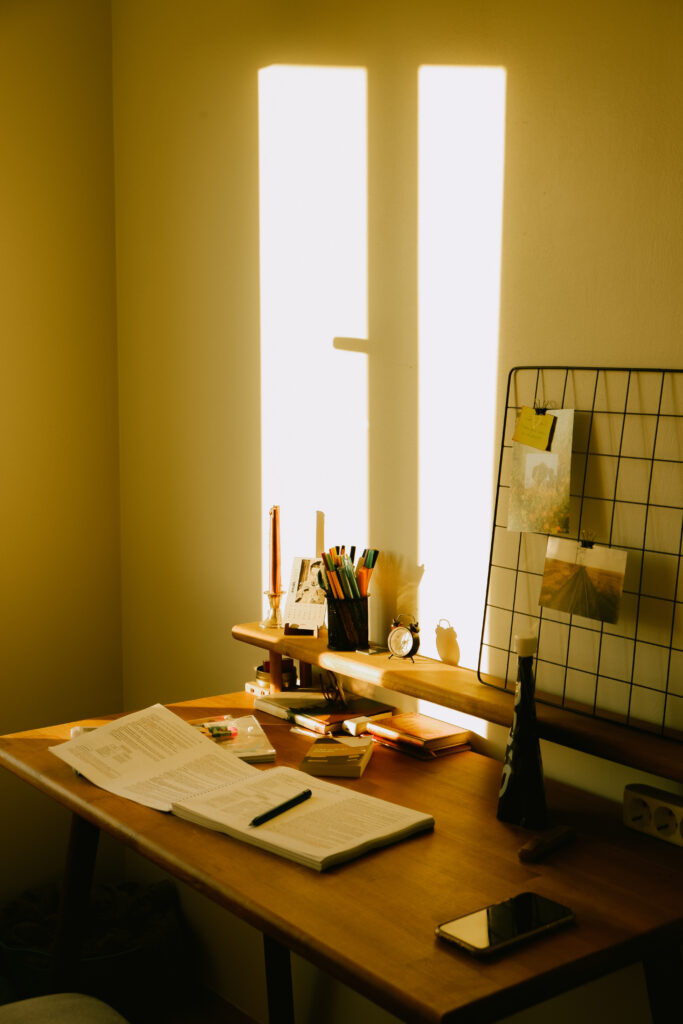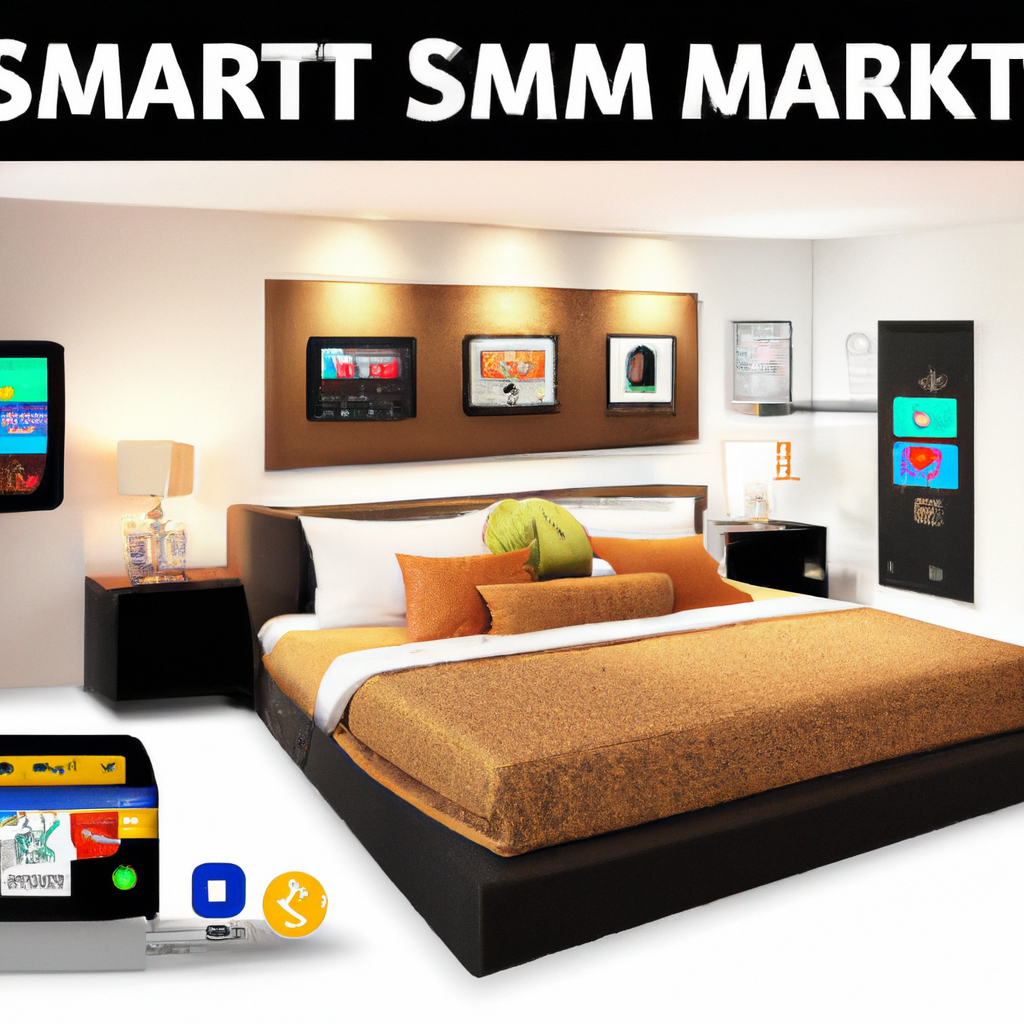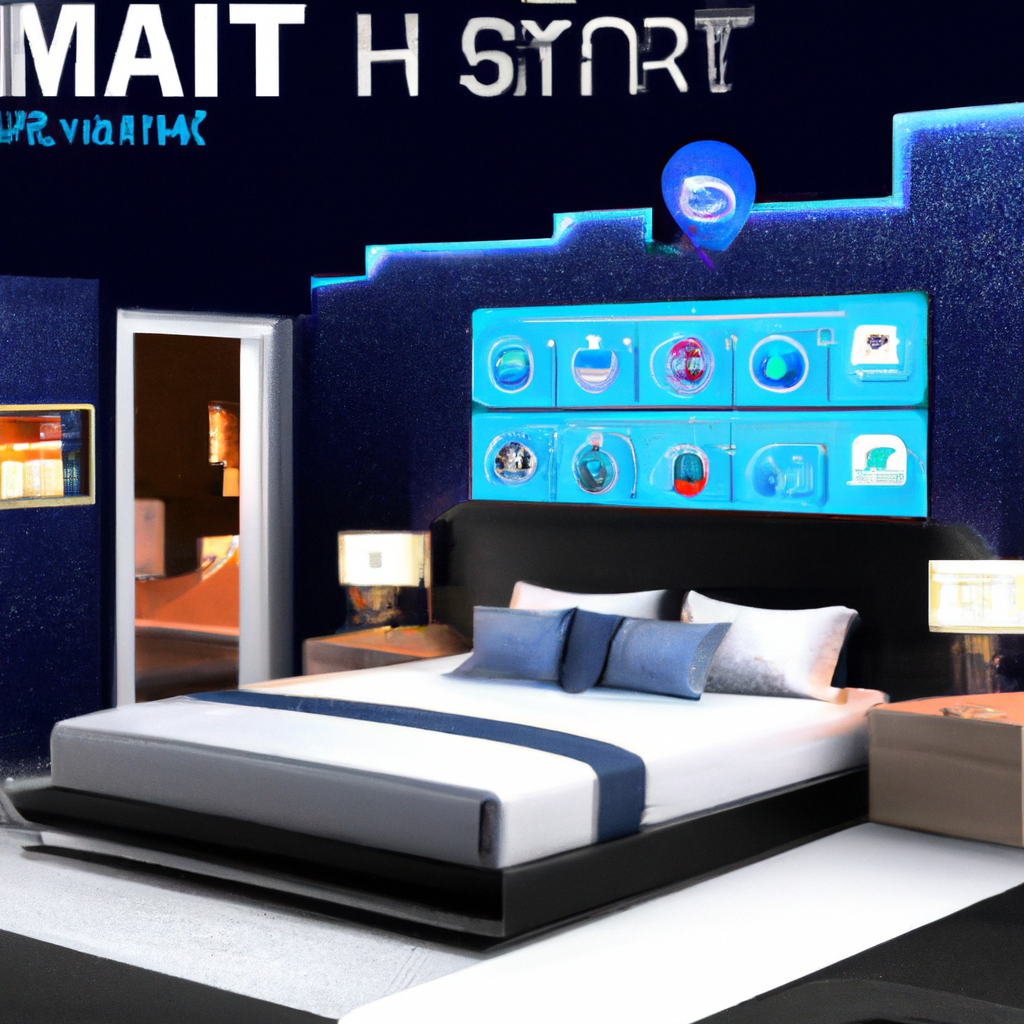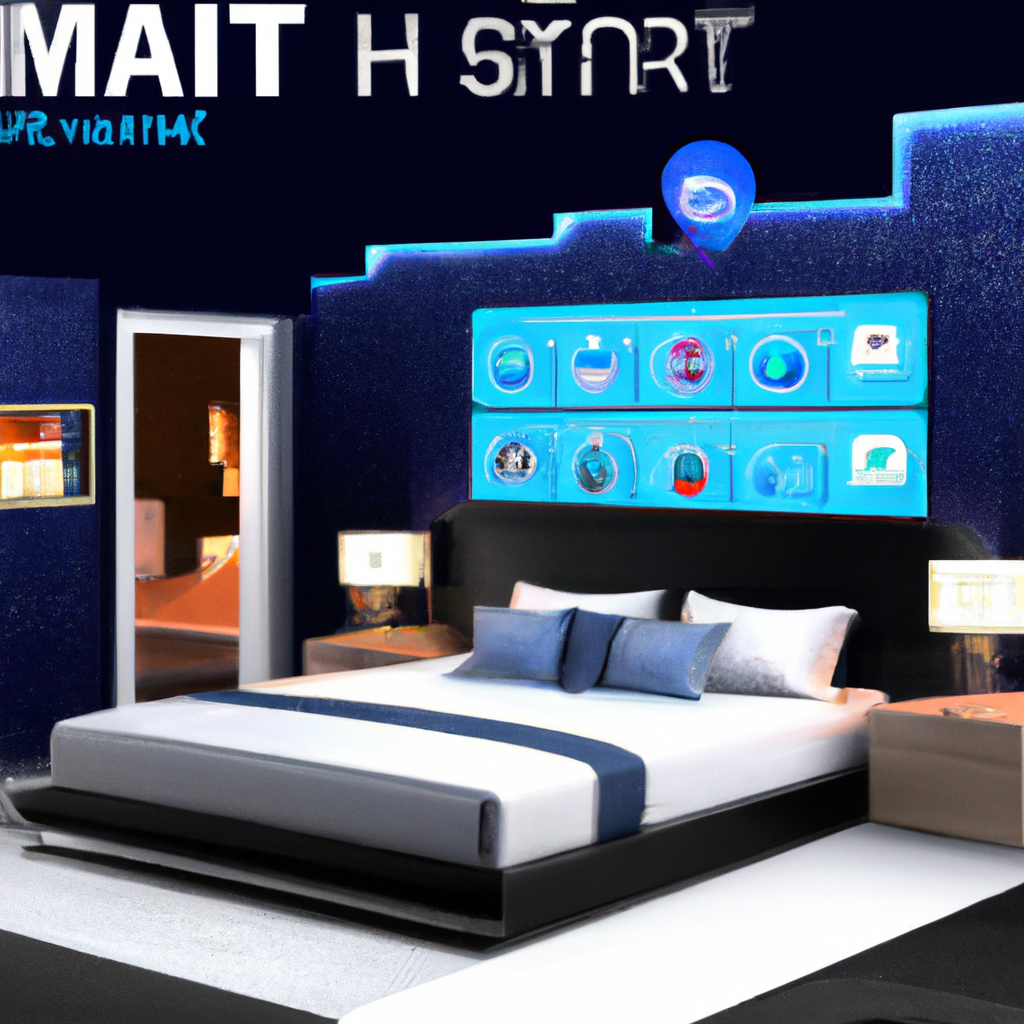Imagine having the ability to control and monitor every aspect of your bedroom, even when you’re miles away from home. In this article, we will explore the fascinating world of creating a smart bedroom with remote control and monitoring. From adjusting the temperature and lighting to ensuring the security of your space, we will guide you through the process of transforming your bedroom into a smart sanctuary that puts you in complete control. Say goodbye to worrying about leaving the lights on or forgetting to lock your doors, because with our step-by-step guide, your bedroom will become a haven of convenience and peace of mind.

Choosing the Right Devices
Selecting Smart Lighting
When it comes to creating a smart bedroom, one of the first devices you’ll want to consider is smart lighting. Smart light bulbs offer a variety of benefits, such as the ability to control them remotely, adjust brightness levels, and even change colors to create different moods. Whether you prefer warm, cozy lighting or bright, energizing light, smart bulbs can be easily customized to suit your preferences. When choosing smart lighting for your bedroom, make sure to look for bulbs that are compatible with your chosen smart home hub and offer features that align with your needs and preferences.
Picking Smart Curtains or Blinds
Another important aspect of a smart bedroom is the ability to control natural light and privacy levels with ease. Smart curtains or blinds can be a game-changer in this regard. With the ability to automate opening and closing based on your desired schedule, remote control functionality, and even integration with voice assistants, you’ll have ultimate control over the lighting in your bedroom. Additionally, some smart curtains and blinds also offer features like noise reduction and energy efficiency, making them a great investment for any smart bedroom setup.
Opting for a Smart Thermostat
A smart thermostat is a must-have device for creating a truly smart and energy-efficient bedroom. With the ability to remotely control your thermostat, you can ensure that your bedroom is always at the perfect temperature when you arrive, without wasting energy when you’re away. Smart thermostats also offer features like learning algorithms that adapt to your preferences over time, energy usage reports, and integration with other smart home devices. When selecting a smart thermostat, look for one that is compatible with your existing HVAC system and offers the features you desire.
Considering Smart Security Systems
While not directly related to remote control and monitoring, a smart security system is an essential component of any smart bedroom setup. With features like motion sensors, door and window sensors, and security cameras, you can have peace of mind knowing that your bedroom is protected even when you’re away. Look for a smart security system that allows for remote monitoring and control, offers notifications and alerts, and integrates well with other smart home devices. With a smart security system in place, you can rest easy knowing that your bedroom is safe and secure.
Setting up Remote Control
Choosing a Smart Home Hub
To enable remote control functionality for your smart bedroom devices, you’ll need to choose a smart home hub. A smart home hub acts as the central control panel for all your smart devices, allowing you to connect and control them from a single interface. When selecting a smart home hub, consider factors such as compatibility with your chosen devices, ease of setup and use, and the availability of advanced features. Popular smart home hubs include Amazon Echo, Google Nest Hub, and Samsung SmartThings Hub. Choose one that aligns with your preferences and needs.
Installing a Mobile App
Once you have selected a smart home hub, the next step is to install the corresponding mobile app on your smartphone or tablet. Most smart home hubs have dedicated apps that allow you to control your devices, create schedules, and monitor their status remotely. After installing the app, follow the setup instructions provided to connect your smart home hub to your home Wi-Fi network. This will ensure that you can control your bedroom devices even when you are away from home.
Connecting Devices to the Network
After setting up your smart home hub, it’s time to connect your bedroom devices to the network. Most smart devices use either Wi-Fi or a dedicated smart home protocol like Zigbee or Z-Wave. To connect your devices, follow the manufacturer’s instructions for each specific device. Typically, this involves putting the device in pairing or discovery mode and using the mobile app to add it to your smart home network. Once connected, you can control and monitor your devices remotely through the app or voice commands if your smart home hub supports them.

Implementing Monitoring Systems
Installing Smart Cameras
To enhance the monitoring capabilities of your smart bedroom, consider installing smart cameras. Smart cameras provide you with real-time video feeds of your bedroom, allowing you to keep an eye on things even when you’re away. Look for cameras that offer HD video quality, night vision, motion detection, and remote access features. Some smart cameras also have two-way audio capabilities, allowing you to communicate with anyone in the bedroom remotely. Ensure that the cameras you choose integrate well with your smart home hub for seamless monitoring and control.
Integrating Motion Sensors
Motion sensors are an excellent addition to any smart bedroom monitoring system. By detecting movement in your bedroom, motion sensors can trigger alerts or actions, such as turning on lights or recording video. This ensures that you are immediately notified of any unexpected activity in your bedroom, providing you with a sense of security and peace of mind. Motion sensors can also be integrated with other smart devices, such as smart cameras or security alarms, to enhance the overall monitoring capabilities of your smart bedroom.
Using Smart Air Quality Monitors
Monitoring the air quality in your bedroom is essential for maintaining a healthy and comfortable living space. Smart air quality monitors can measure factors like temperature, humidity, particulate matter, and volatile organic compounds (VOCs) in real-time. By monitoring these metrics, you can ensure that your bedroom is always at optimal conditions for sleep and overall well-being. Some smart air quality monitors also offer integration with other devices, allowing you to automatically adjust lighting or HVAC settings based on the detected air quality.
Automating Bedroom Functions
Connecting Smart Plugs
Smart plugs are a simple yet powerful tool for automating various functions in your bedroom. By plugging your devices, such as lamps or fans, into a smart plug, you can control their power remotely through your smart home hub or mobile app. This allows you to turn on or off devices, create schedules for when they should operate, and even monitor energy consumption. Smart plugs are an excellent choice for those who want to automate their bedroom without replacing existing devices with smart alternatives.
Creating Schedules and Scenes
To truly automate your smart bedroom, take advantage of the scheduling and scene creation features offered by your smart home hub or mobile app. With scheduling, you can set specific times for your devices to turn on or off, ensuring that your bedroom is ready when you arrive or that certain devices are turned off during the night. Scenes, on the other hand, allow you to create customized settings for different activities. For example, you can create a “Sleep” scene that dims the lights, closes the curtains, and sets the thermostat to an optimal sleeping temperature.
Exploring Voice Control
Voice control is a convenient and hands-free way to control your smart bedroom devices. Many smart home hubs support voice assistants like Amazon Alexa, Google Assistant, or Apple Siri. By connecting your smart home hub to a compatible voice assistant, you can control your bedroom devices using simple voice commands. For example, you can say, “Alexa, turn off the bedroom lights,” or “Hey Google, set the thermostat to 68 degrees.” Voice control not only adds convenience but also enhances accessibility, allowing you to control your smart bedroom devices without the need to use a mobile app or physical controls.

Enhancing Privacy and Comfort
Integrating Smart Curtains or Blinds
In addition to their light control capabilities, smart curtains or blinds also contribute to enhancing privacy and comfort in your smart bedroom. With their ability to automate opening and closing, you can ensure that your bedroom remains private even when you’re not home. By setting specific schedules, your curtains or blinds can open and close at predetermined times, giving the appearance that someone is present in the bedroom. This can act as a deterrent for potential intruders and provide you with peace of mind while you’re away.
Temperature and Humidity Control
Maintaining optimal temperature and humidity levels in your bedroom is crucial for a comfortable and restful sleep. Smart thermostats play a key role in regulating the temperature, but you can further enhance comfort by using additional devices. For example, smart humidifiers or dehumidifiers can help ensure the humidity levels in your bedroom are within the recommended range, preventing issues like dryness or excessive moisture. By integrating these devices with your smart home hub, you can easily monitor and control the temperature and humidity in your bedroom from anywhere.
Noise Reduction Methods
Noise can significantly impact your sleep quality and overall comfort in the bedroom. Fortunately, there are smart devices available that can help reduce unwanted noise and create a more peaceful environment. For example, white noise machines or smart speakers with built-in sound machines can play soothing sounds or white noise to mask disturbances and promote better sleep. You can control these devices remotely to turn on and off or adjust the volume, ensuring that your bedroom remains a quiet and tranquil space, even when you are away.
Ensuring Security and Safety
Implementing Smart Locks
Smart locks provide an additional layer of security and convenience for your smart bedroom. With a smart lock, you can remotely lock or unlock your bedroom door, monitor access history, and even create temporary access codes for guests. This eliminates the need for physical keys, reduces the risk of lost or stolen keys, and allows you to grant access to your bedroom remotely. Smart locks often integrate with other smart security systems, such as cameras and alarms, further enhancing the security of your bedroom.
Setting Up Security Alarms
To protect your smart bedroom from potential intruders, consider setting up security alarms. Smart security alarms can be integrated with your other smart home devices, such as motion sensors or door/window sensors, to provide comprehensive monitoring. When triggered, these alarms can send alerts to your smartphone, notify security monitoring services, or even activate external sirens and lights. By combining smart alarms with other security measures, such as smart locks and cameras, you can create a robust and reliable security system for your bedroom.
Monitoring Carbon Monoxide and Smoke
Carbon monoxide and smoke detectors are vital for ensuring the safety of your smart bedroom. Smart detectors offer advanced features compared to traditional detectors, such as remote monitoring and real-time alerts. When dangerous levels of carbon monoxide or smoke are detected, these devices can send notifications to your smartphone, allowing you to take immediate action. Some smart detectors also offer integration with other smart devices, such as smart thermostats or security systems, to automatically shut off HVAC systems or trigger evacuation measures if necessary.

Selecting Compatible Devices
Researching Compatibility
When building a smart bedroom, it’s crucial to research the compatibility of devices before making a purchase. Not all smart devices work seamlessly together, and using incompatible devices can lead to frustration and limited functionality. Check compatibility lists provided by manufacturers or consult online resources and forums dedicated to smart home technology. Ensure that the devices you choose are compatible with your chosen smart home hub, communication protocols, and any other existing devices or systems you plan on integrating.
Checking Interoperability Standards
Interoperability standards play a crucial role in ensuring that your smart bedroom devices can work together harmoniously. Look for devices that adhere to widely recognized standards like Zigbee or Z-Wave. These standards allow for easier integration between different brands and ensure that your devices can communicate and cooperate effectively. Devices that support these standards will typically display the appropriate logos or information on their packaging or product descriptions. By selecting devices with reliable interoperability, you can avoid common compatibility issues and create a seamless smart bedroom experience.
Considering Integration Options
When selecting devices for your smart bedroom, consider the integration options they offer. Look for devices that can be easily controlled and monitored through your chosen smart home hub or mobile app. Additionally, check if the devices support third-party integrations with popular platforms and services. This can expand the functionality of your smart bedroom and allow you to create more complex automations. Integration options can range from voice assistants like Amazon Alexa or Google Assistant to larger ecosystems like Apple HomeKit or Samsung SmartThings.
Designing a User-Friendly Interface
Customizing the Mobile App Settings
To ensure a user-friendly experience for controlling and monitoring your smart bedroom, take advantage of the customization options available in the mobile app provided by your smart home hub. Most apps allow you to rearrange device icons, create shortcuts, and personalize the interface to suit your preferences. Arrange your devices in a logical order, group them by room or function, and assign meaningful names to make navigation and control intuitive and efficient. Customizing the app settings will enhance your overall user experience and make managing your smart bedroom a breeze.
Creating Easy-to-Use Controls
When designing the controls for your smart bedroom, strive for simplicity and ease of use. Rather than cluttering the interface with excessive options, focus on essential controls that provide the most significant benefit. Prioritize frequently used functions and place them within easy reach, whether through buttons on your smart home hub, voice commands, or the mobile app interface. By keeping controls straightforward and intuitive, you can avoid confusion and make controlling your smart bedroom devices effortless, even for guests or family members who may be less familiar with the technology.
Considering Voice Assistants and Remotes
In addition to mobile apps and smart home hubs, consider utilizing voice assistants or remotes to control your smart bedroom devices. Voice assistants, like Amazon Alexa or Google Assistant, allow you to control your devices using natural language commands, eliminating the need to interact with physical controls or mobile apps. Some devices may also come with their own dedicated remotes, providing a tactile and familiar option for controlling your smart bedroom setup. By offering multiple control methods, you can cater to different preferences and ensure that everyone can easily interact with your smart bedroom devices.

Overcoming Challenges
Addressing Network Connectivity Issues
One of the common challenges in creating a smart bedroom is dealing with network connectivity issues. When relying on Wi-Fi or a smart home protocol, factors like distance, interference from other devices, or even thick walls can affect the reliability of your connection. To address connectivity issues, consider placing your smart home hub in a central location, optimizing your Wi-Fi network with range extenders or mesh systems, or using wired connections for devices that support them. Regularly updating firmware and ensuring that your network has sufficient bandwidth can also help maintain a stable and reliable connection for your smart bedroom devices.
Handling Power Outages
Power outages can disrupt the remote control and monitoring capabilities of your smart bedroom devices. When planning your setup, consider using devices with backup power options, such as battery-powered sensors or uninterruptible power supplies (UPS) for critical devices like security systems. Additionally, investigate whether your chosen smart home hub has built-in power outage handling features, such as automatic device reconnection after power is restored. By preparing for power outages, you can minimize their impact on the functionality of your smart bedroom and ensure that your devices continue to operate as intended.
Dealing with Device Compatibility Problems
Device compatibility problems can arise when integrating various smart devices from different manufacturers. Some devices may not work well together or may have limited functionality when used as part of a larger smart bedroom setup. Before purchasing any devices, thoroughly research compatibility, read user reviews, and consult manufacturer documentation to ensure that the devices you select will work together seamlessly. If compatibility issues do arise, reach out to manufacturer support or online communities dedicated to smart home technology for assistance and troubleshooting. With proper research and support, you can overcome compatibility challenges and create a fully functional smart bedroom.
Increasing Energy Efficiency
Using Smart Lighting and Sensors
Smart lighting and sensors can significantly contribute to increasing energy efficiency in your smart bedroom. Take advantage of features like scheduling and motion sensors to ensure that lights are only on when needed. By creating schedules that align with your daily routine, you can avoid leaving lights on unnecessarily. Motion sensors can automatically turn off lights when no movement is detected for a specific period, further reducing energy waste. Additionally, consider using smart bulbs that are energy-efficient, such as LED bulbs, which consume less energy while providing long-lasting and customizable lighting options.
Optimizing Temperature Control
Smart thermostats play a crucial role in optimizing temperature control and increasing energy efficiency in your smart bedroom. With their learning algorithms and scheduling capabilities, smart thermostats can adapt to your preferences and ensure that your bedroom is heated or cooled efficiently. Set appropriate temperature ranges and use scheduling to reduce energy consumption when you’re away or asleep. Some smart thermostats also offer additional energy-saving features, such as geofencing, which adjusts the temperature based on your location. By optimizing temperature control, you can decrease energy usage and contribute to a greener environment.
Monitoring Energy Consumption
To gain better insights into your energy usage and identify areas for improvement, consider monitoring the energy consumption of your smart bedroom devices. Smart plugs with built-in energy monitoring capabilities can provide real-time energy usage data, allowing you to identify power-hungry devices or inefficient usage patterns. Some smart home hubs or mobile apps also offer energy monitoring features that aggregate data from multiple sources. By analyzing this information, you can make informed decisions about device usage, identify opportunities for energy conservation, and reduce your overall energy footprint.
In conclusion, creating a smart bedroom for remote control and monitoring while traveling involves carefully choosing the right devices, setting up remote control capabilities, implementing monitoring systems, automating bedroom functions, enhancing privacy and comfort, ensuring security and safety, selecting compatible devices, designing a user-friendly interface, overcoming challenges, and increasing energy efficiency. By following the steps and considering the tips outlined in this article, you can transform your bedroom into a smart haven that provides convenience, security, and energy savings, even when you’re away. So start exploring the world of smart home technology and embark on the journey to create your very own smart bedroom today.
